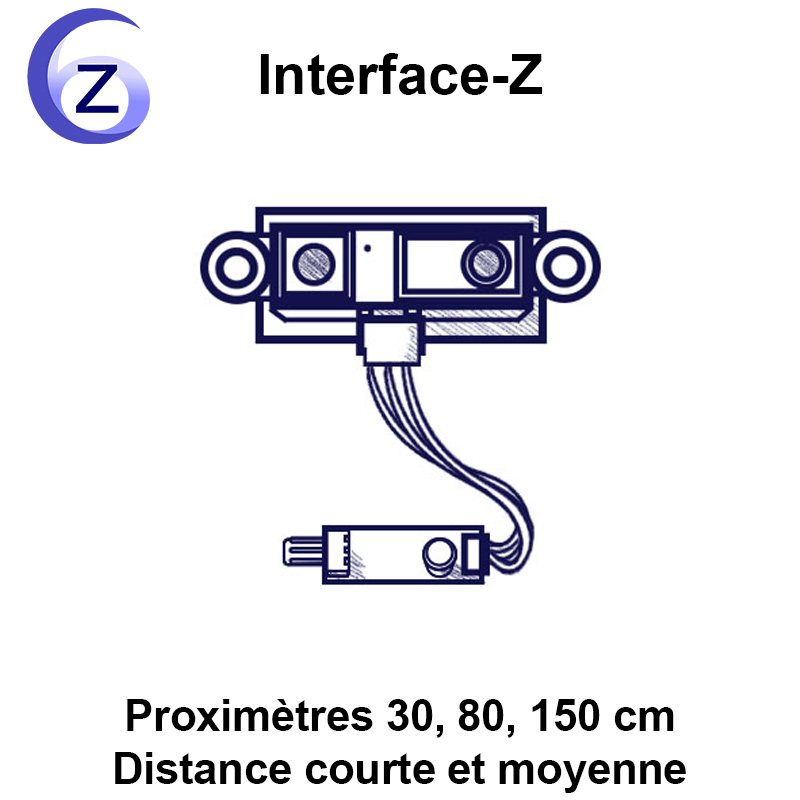What do they detect ?
Possible detections with an analog infrared proximity sensor :
- Still presence
- Passage
- Approach/Removal
- Precise distance measurement (Telemetry)
- Nearby movements, such as a hand
- Direction of passage, i.e. input/output counting, with 2 parallel sensors (light barrier)
- Locate a person (with version 1.m) or a hand by squaring the space with several parallel sensors
- Monitoring passage through a transparent bowl or aquarium
- Interactivity through a window display
How do they do it ?
Proximity sensors are simple sensors that measure distance. They can be directly plugged onto a sensor interface board such as our 2/4/8/12 analog inputs to Midi Interface or our 16 sensors to OSC interface to get the data in network protocol.
They return a gradual analog response.
These sensors are made using infrared modules by Sharp GP2Y0A02YK0F, GP2Y0A41SK0F, GP2Y0A21YK0F (a new spin-off from the historic GP2D12).
Ranges
- 40 cm
- 80 cm
- 150 cm (1,5 m)
For a range up to 5,5 meters, please refer to our “Giant proximity sensor” page.
Their characteristics are shared with the other sensors in the same category, and are detailed on the general information page. They are therefore directional, non-linear and show data folding as close as possible to the sensitive modules.
Our associated electronic cards help denoise and amplify the sensor's data so that their response goes over a full-course and is clear, which makes it a lot more precise than using the sensitive module directly.
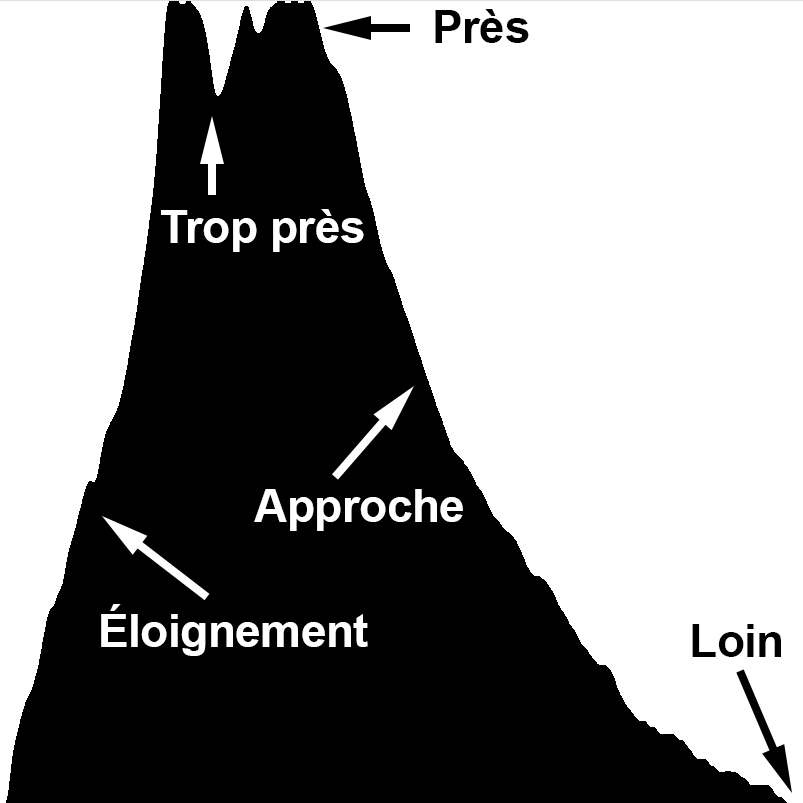
Data returned by the sensor over time, shown over time. Data values vary from 0 to 127.
Update rate:
- 4 to 30 cm range: around 47 measurements / second
- 20 to 150 cm range : 24 measurements / second
- 10 to 80 cm range : 24 measurements / second
Update rate calculated according to the sensitive module's documentation.
Sensitive module's dimensions
The 30 to 80 cm modules are the same size, the 150 cm module is a bit bigger.
Electronic card
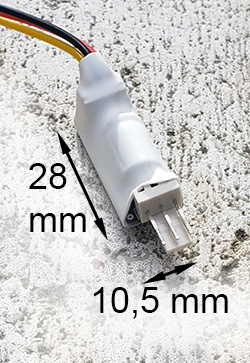
30 cm, 80 cm
Fasten with a screw in the holes on each side.

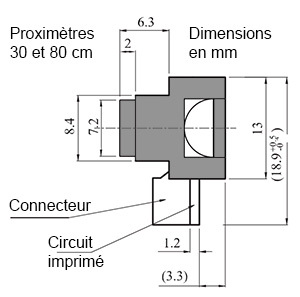
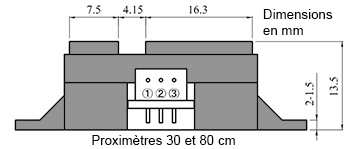
150 cm
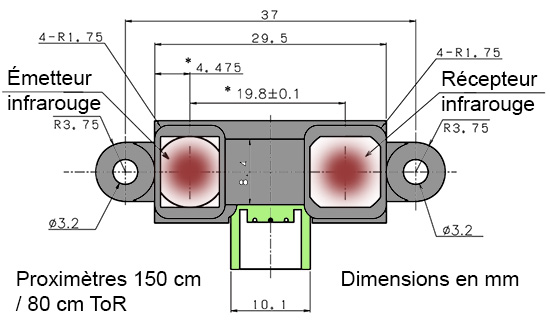
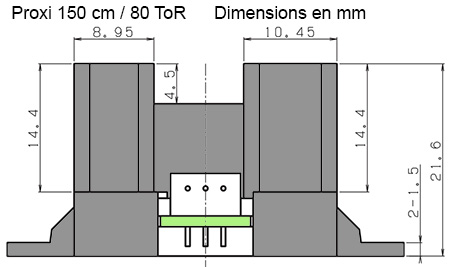

Application examples
Detecting when a spectator passes close to an art installation, measuring a hand approaching a precise spot, remotely controlling a sound effect with a lot of finesse, analyzing a footbeat, creating a virtual string, a non-contact musical instrument...
Nicolas Perrin / L'émoi sonneur, GUITARE / PAYSAGE (2021) :
- Community website !
- Video, with leaves !
- Other video !
Veaceslav Druta, Balançoire / Swing / Scrânciob (2004) :
- Artwork presentation
- Video of the installation
Cécile Guigny, Play in C (2007) :
- Artwork presentation
- Video of the installation
Anna Sokolova, Understand/Feel (2005) :
- Artist's website
Small demonstration video : visual and acoustic application.
Belgariade interactive by Interface-Z on Vimeo.
Summary
Pros :
- Contactless sensor for remote interaction.
- This sensor is very difficult to interfere with, and very robust. It withstands strong lighting and violent variations in brightness, despite being an optical (infra-red) system.
- At short distance it has excellent resolution, in the mm range.
- It is easy to use (when the electronic amplification is supplied with the module, which is the case for our version of the product).
- Thanks to our associated electronic adaptation, the sensor returns a clear and denoised signal that goes full course over 0-5V.
- It can be protected behind something see-through, and works even if it stuck against a window. It can hence be used within a glass display case or a shop display.
Cons :
- The signal is not directly proportional to the distance : the sensor is very sensitive to short distances, and becomes less and less sensitive as the distance grows. This non-linear aspect of the sensor can however be corrected within a program or patcher, or can be harnessed for an esthetic purpose (to simulate a capacitive theremin for example).
- One can't use it for distances under 10 cm (in the case of the 10-80cm range module, even more for larger ranges), for the data under those distances are not coherent with a true measurement, and cannot be truly exploited. The data returned for distances too short is identical to the data corresponding to distance too far (data folds, the signal is non-bijective). To avoid confusion, it is recommended to not use the data for distances below 10 cm, or if one really wants to use very close proximity, only use the data below the data-folding threshold. (The detection remains very precise at short distances).
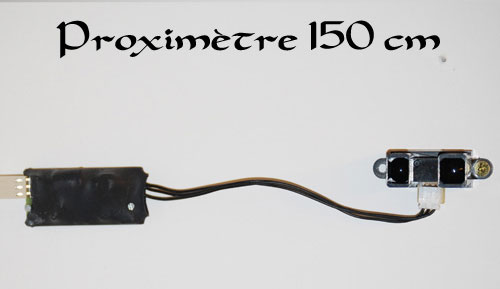
1,50 m proximeter.
This detector is made more discreet by separating the sensitive module from the electronic card, that can then be attached further away. The wire between the two cannot however be extended too long, and one shouldn't go beyond 1 meter (to avoid interference).
